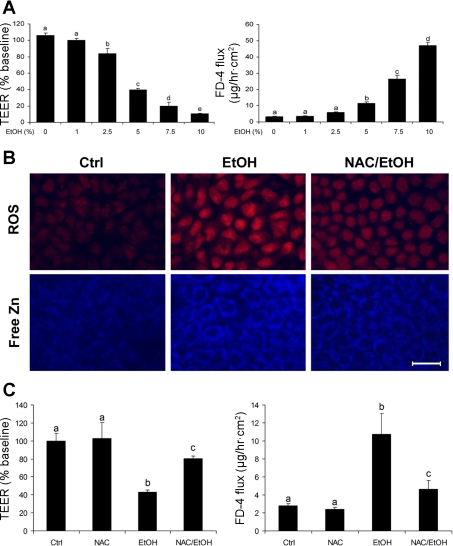Fig. 4.
Association of zinc mobilization with ROS generation in alcohol-induced epithelial barrier disruption in Caco-2 cells. A: epithelial barrier function. The Caco-2 cells on the inserts were treated with ethanol at a concentration of 1, 2.5, 5, 7.5, or 10% (vol/vol) for 5 h, and alteration in epithelial barrier function was assessed by measuring transepithelial electrical resistance (TEER) and FD-4 permeability. B: fluorescence microscopy of ROS and free zinc. Caco-2 cells were cultured on chamber slides and treated with 5% ethanol (vol/vol) for 5 h in the presence or absence of 2 mM N-acetyl-cysteine (NAC). ROS and free zinc were detected by fluorescent microscopy after incubation with dihydroethidium (5 μM) or Zinquin (25 μM), respectively. Scale bar = 25 μM. C: effect of NAC on alcohol-induced epithelial barrier disruption. Caco-2 cells were treated with 5% ethanol with or without 2 mM NAC pretreatment. Results are means ± SD (n = 8). Significant differences (P < 0.05, ANOVA) are identified by different letters, a-e. Ctrl, control; E or EtOH, ethanol.

